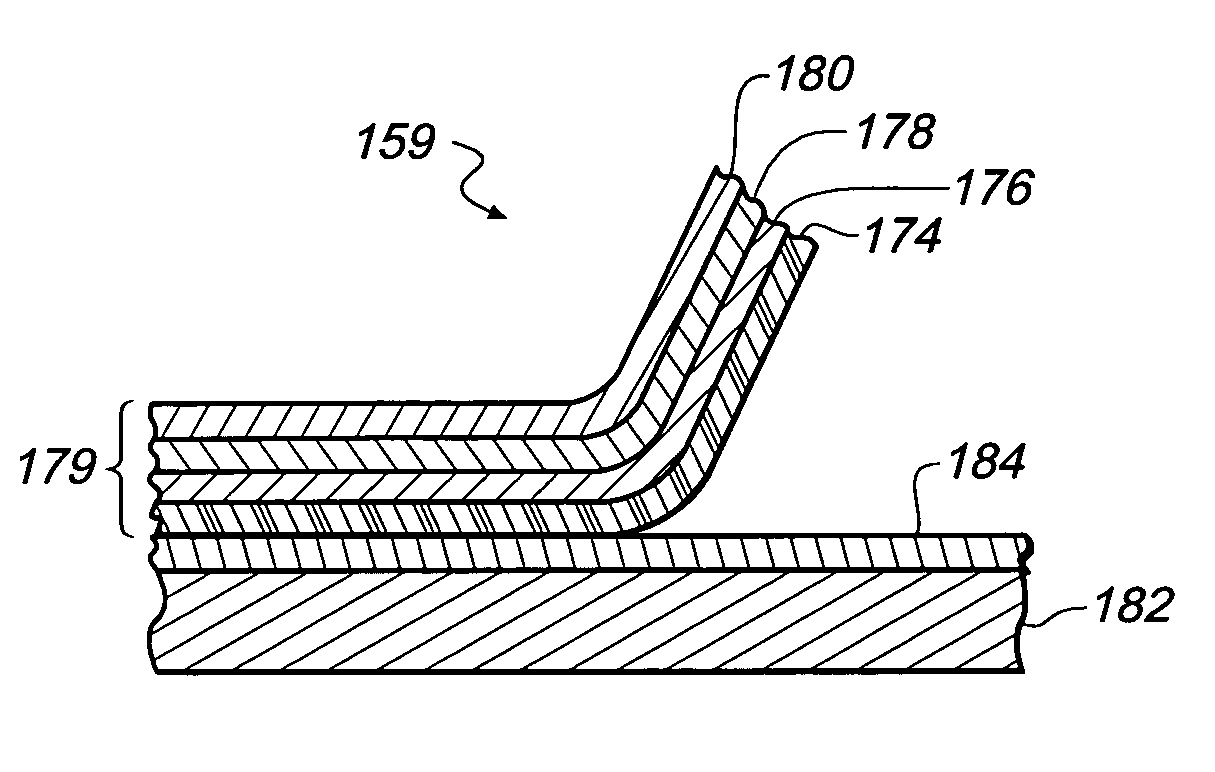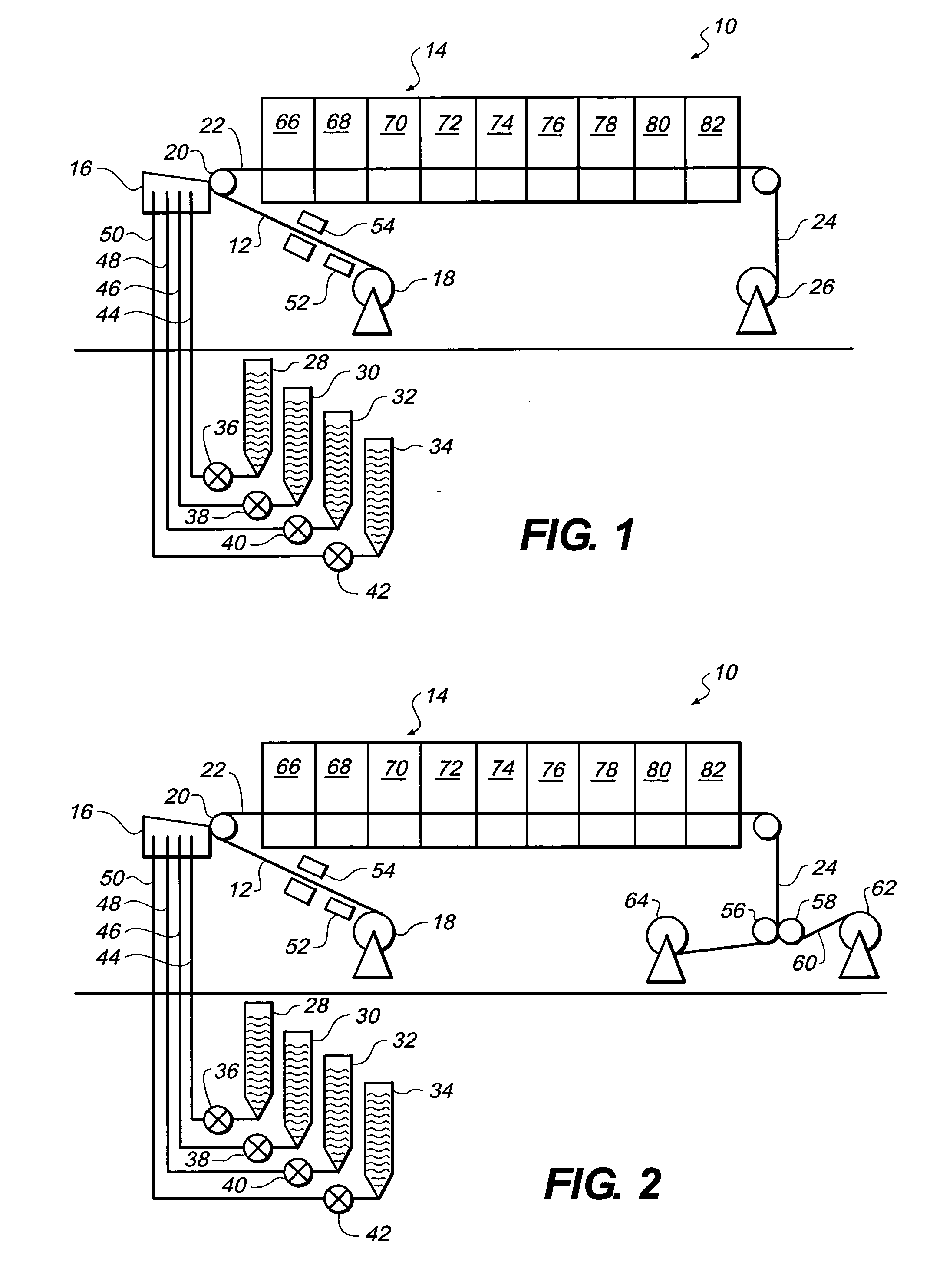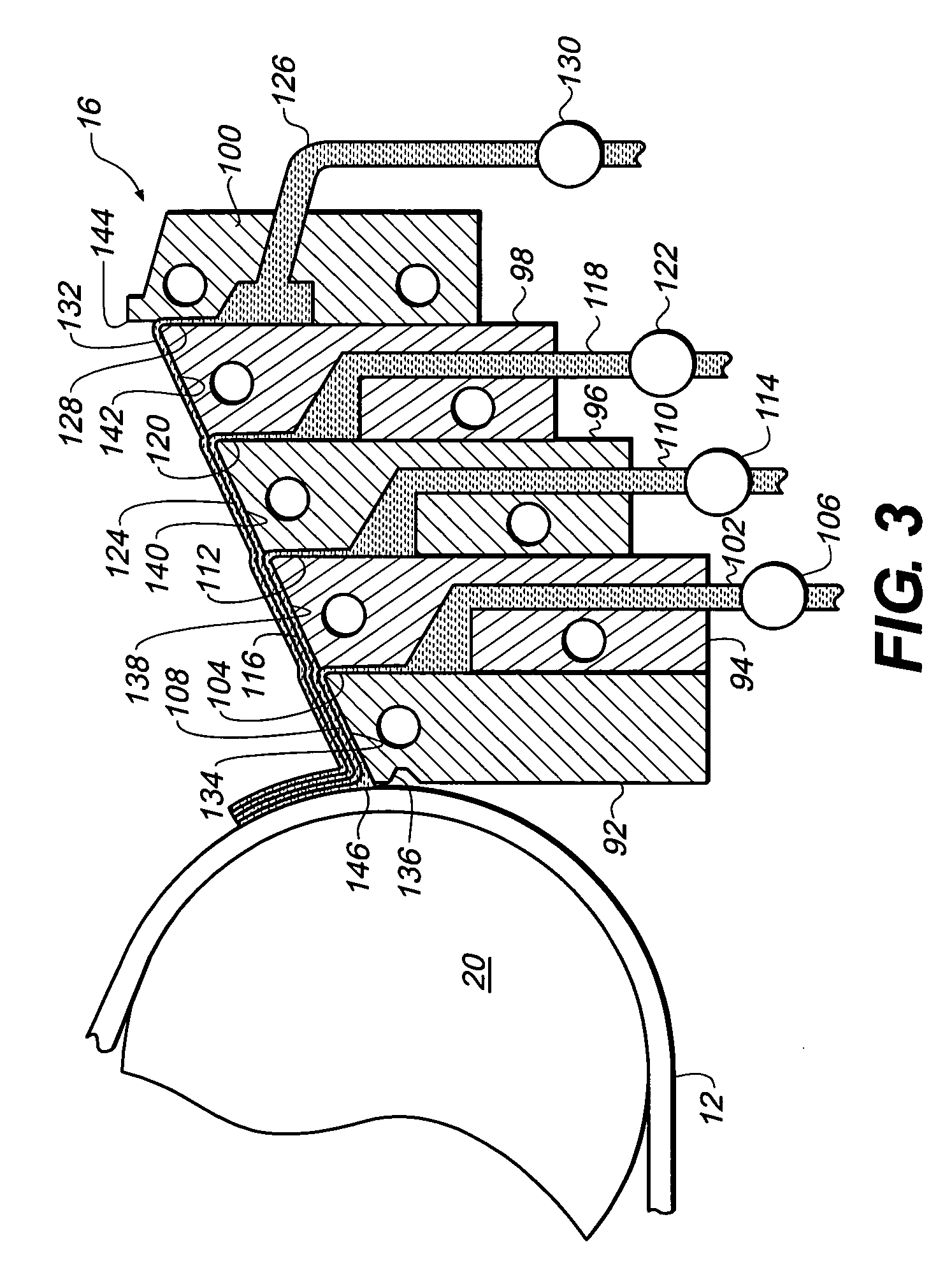Guarded cover film for LCD polarizers
a technology of polarizers and protective films, applied in the field of polymer films, can solve the problems of polyvinyl alcohol films used to form polarizers that are very fragile and dimensionally unstable, and films prepared by melt extrusion are generally not suitable for optical applications, and achieve the effect of facilitating the fabrication of very thin cover sheets
- Summary
- Abstract
- Description
- Claims
- Application Information
AI Technical Summary
Benefits of technology
Problems solved by technology
Method used
Image
Examples
Embodiment Construction
[0034] The following definitions apply to the description herein:
[0035] In plane phase retardation, Rin, of a layer is a quantity defined by (nx−ny)d, where nx and ny are indices of refraction in the direction of x and y. x is taken as a direction of maximum index of refraction in the x-y plane and y direction is perpendicular to it. x-y plane is parallel to the surface plane of the layer. d is a thickness of the layer in the z-direction. The quantity (nx−ny) is referred to as in-plane birefringence, Anin. The value of Δnin is given at a wavelength λ=550 nm.
[0036] Out of-plane phase retardation. Rth, of a layer is a quantity defined by [nz−(nx+ny) / 2]d. nz is the index of refraction in the z-direction. The quantity [nz−(nx+ny) / 2] is referred to as out-of-plane birefringence, Δnth. If nz>(nx+ny) / 2, Δnth is positive (positive birefringence), thus the corresponding Rth is also positive. If nzth is negative (negative birefringence) and Rth is also negative. The value of Δnth is given a...
PUM
| Property | Measurement | Unit |
|---|---|---|
| Length | aaaaa | aaaaa |
| Linear density | aaaaa | aaaaa |
| Thickness | aaaaa | aaaaa |
Abstract
Description
Claims
Application Information
 Login to View More
Login to View More - R&D
- Intellectual Property
- Life Sciences
- Materials
- Tech Scout
- Unparalleled Data Quality
- Higher Quality Content
- 60% Fewer Hallucinations
Browse by: Latest US Patents, China's latest patents, Technical Efficacy Thesaurus, Application Domain, Technology Topic, Popular Technical Reports.
© 2025 PatSnap. All rights reserved.Legal|Privacy policy|Modern Slavery Act Transparency Statement|Sitemap|About US| Contact US: help@patsnap.com



